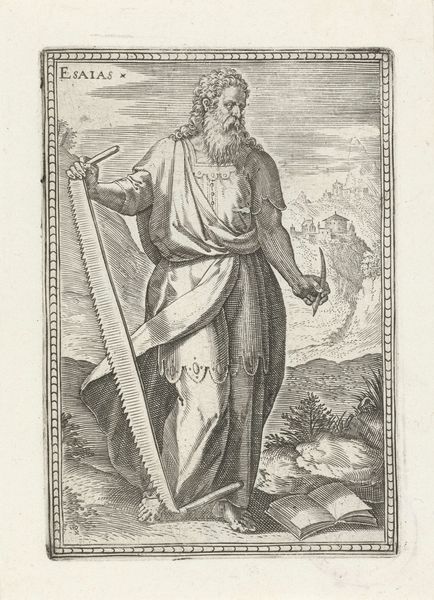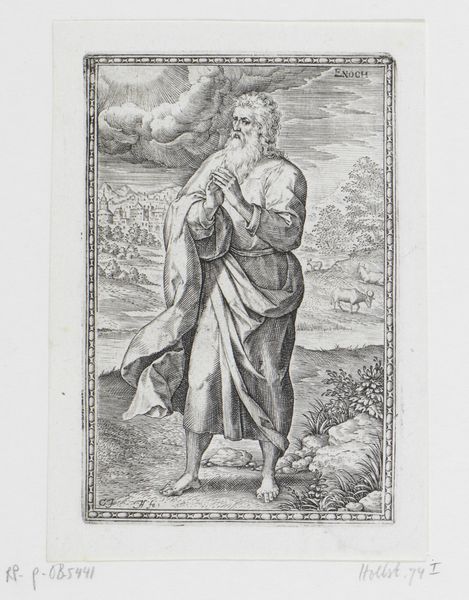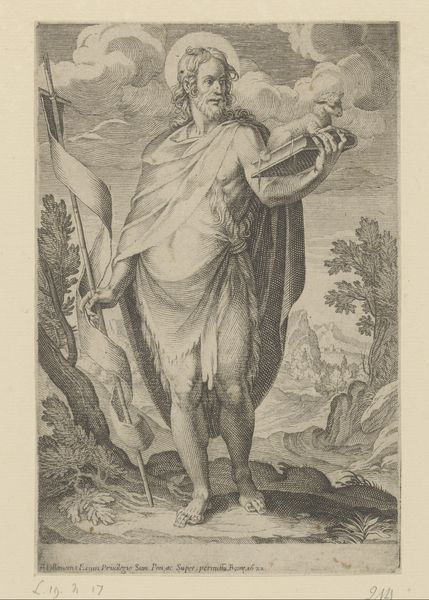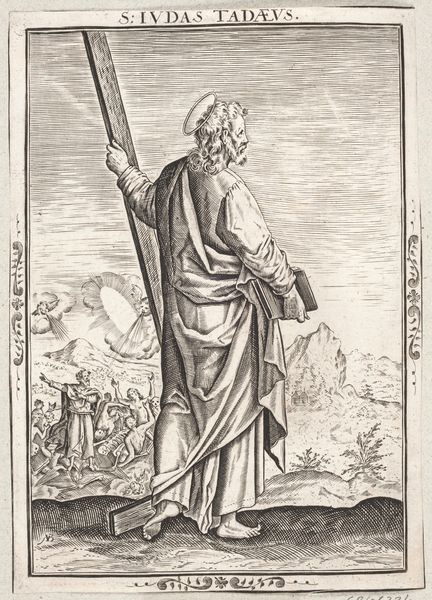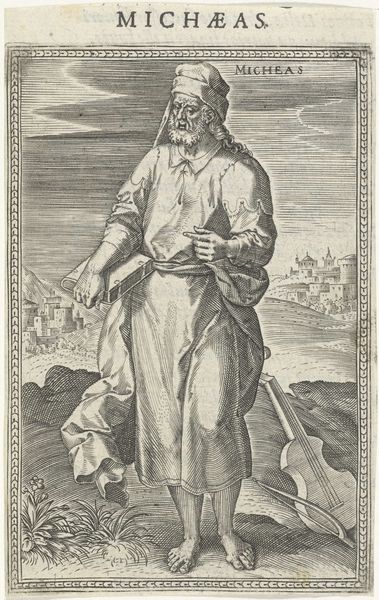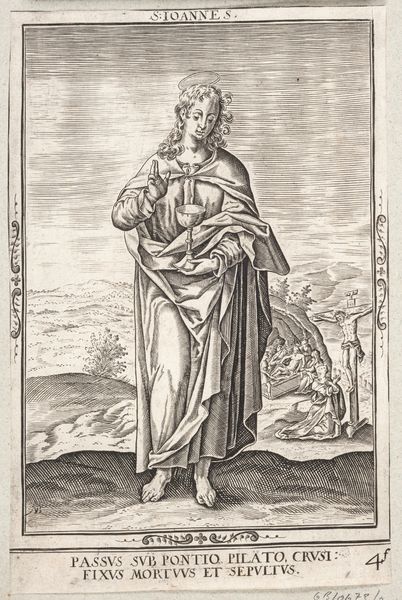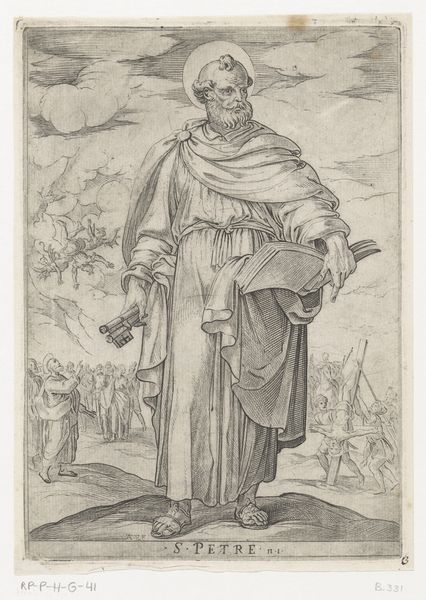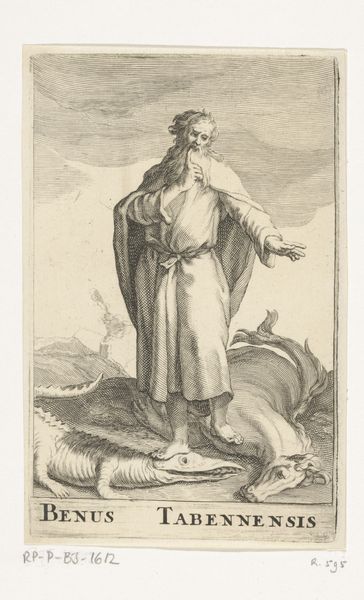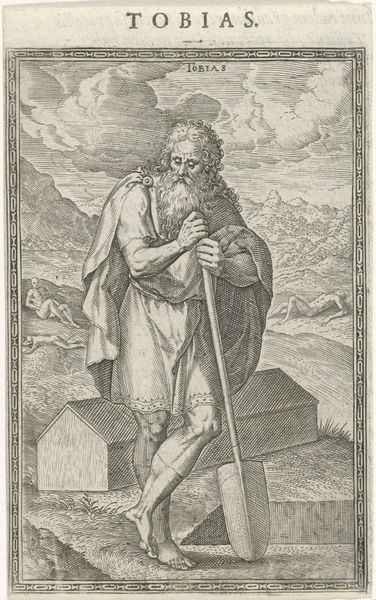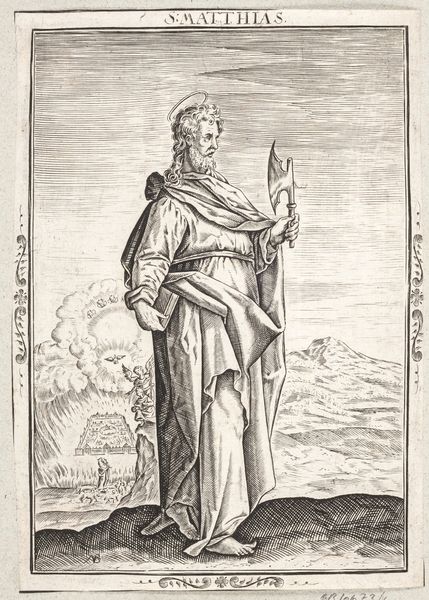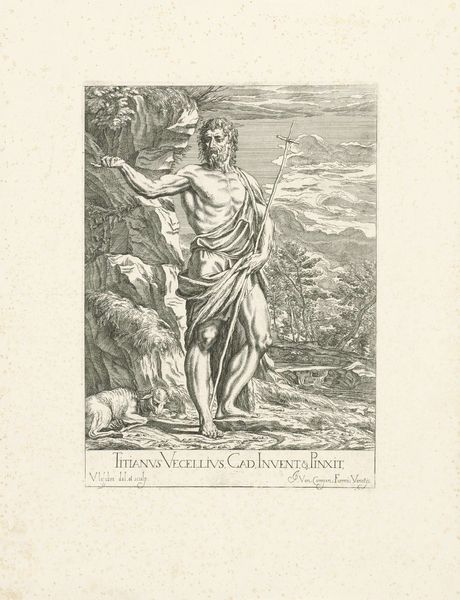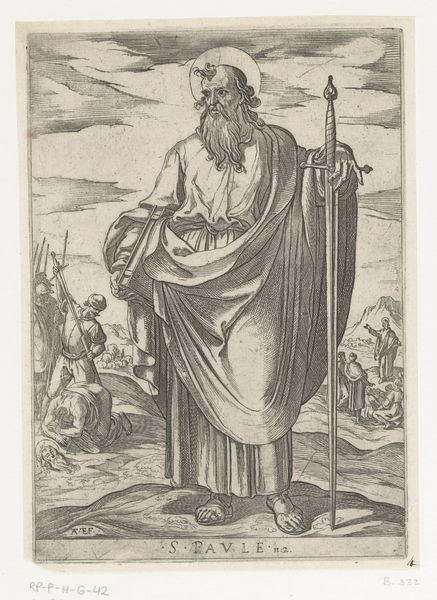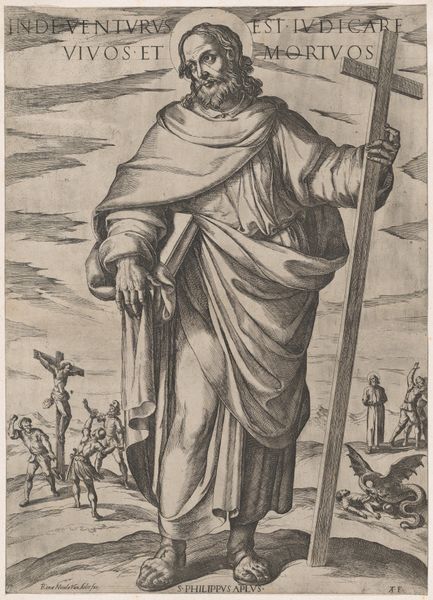
print, engraving
# print
#
landscape
#
mannerism
#
figuration
#
history-painting
#
engraving
Dimensions: height 116 mm, width 81 mm
Copyright: Rijks Museum: Open Domain
This is "Profeet Elisa," made by Johann Sadeler I around the turn of the 17th century, using engraving. This intaglio process involves cutting lines into a metal plate, inking the surface, and then wiping it clean so that ink remains only in the grooves. Look closely, and you can see how Sadeler used carefully placed marks to create a full range of tones. Hatching, cross-hatching, stippling - these are all techniques of labor, built up line by line. The act of engraving demanded a keen eye and steady hand. It was physically demanding, and required a lengthy apprenticeship. The result of all this skilled work is a print that could be reproduced many times, and sold relatively cheaply. Sadeler, and printmakers like him, played a crucial role in disseminating images widely in early modern Europe. This was not just about art, but about the mass production of visual culture.
Comments
No comments
Be the first to comment and join the conversation on the ultimate creative platform.
